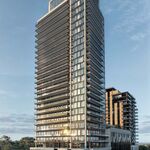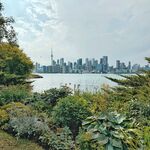Objection noted. I do not think bus lanes will improve the ride quality at all. A road is a road. A local bus travelling on a newly paved road wil be better than a bus on a road with potholes, and cracks. If the bus lane was mae of concrete, I would agree the ride quality would be better, but it is highly unlikely that would be the case.
Any pavement deteriorates with time. But for the same road condition, bus-only lane is somewhat more comfortable than mixed-traffic bus.
Except, that 1.1 Billioni is only going to help riders lucky enough to live near the 2 stations(Vic Park, Warden) who can walk in. I just do not understand why people are so obsessed with speed, and using only subways to achieve the highest speed possible to the station, and have no answer beyond "they can transfer to buses to complete their journey when they reach the station."
In my view, speed is extremely important for transit. Time that I spent on slow transit is time that I could have spent doing something more useful. I do not understand how can people deny that.
Having to commute more than 1 hour each way (2 hours per day) really cuts into your schedule if you have a family and a lot of stuff to do; and makes transit unattractive even for people who would rather not drive.
I heard that the 190 express bus route had stops ADDED by request from the riders. Pretty solid evidence, people want stops nearby.
Obviously, people who live near that stop benefit from the stop being added. People who travel by, would likely prefer express ride, but were not asked.
How do you propose to address this issues with a subway with widely spaced stops?
Either build stations no more than 1 km apart, or use a local bus.
A subway to Warden is not going to help anyone, except force a transfer at Warden to buses. Nothing's changed except the terminus is now Warden, instead of Don Mills.
The transfer exists already, no new transfers would be forced. The speed would improve: Warden to Don Mills by bus is 12 - 15 min, by subway it would be 5 - 7 min; and that would help much more people than SELRT.
I am really trying to wrap my head around this thinking that only subways can deliver quality transit, and buses providing low to intermediate capacity transit.
How else can you travel a large distance within 416 in a reasonable time? Either subway, or fully grade-separate LRT, or GO trains; but the latter do not travel everywhere, and in many corridors, no suitable tracks exist.
It was proven, buses cannot provide intermediate capacity transport with significant infrastructure, and operating costs. Light Rail can provide intermediate capacity needs without significant infrastructure. Why do you, and others discount the positive role surface rail can provide?
There exists a number of routes in 416 where LRT is a right solution, Finch West being one of them. For Sheppard East, LRT is not the optimal solution.
It's been repeated over, and over agaiin, but speed is not the main determinant in attracting riders. t's a part of the equation, but you, and others seem to be only focusing on speed.
The best investment in transit is the one that provides greatest benefit to greatest number of riders. The northern Scarborough is remote and somewhat isolated geographically from the rest of Toronto. The extension of Sheppard subway would help many people living there to travel to other places in the city. In contrast, SELRT will help smaller number of people (living near Sheppard).
SELRT will be the best solution only if it is both origin and destination for the majority of its riders. I don't think this is the case. Jobs do not concentrate around Sheppard, they are either in downtown or scattered all over the city. Even if there is significant job creation along SELRT, not everybody can live close to work; think for example about families with two bread-winners whose jobs are far apart.
The SELRT is going to be a major success, whetever people like it or not.
"Major" is a relative term. However, I agree that it will be a "success", since it will improve transit experience for its riders, will sport a respectable ridership level (at least in the western portion), and is not at risk of being over capacity.
Is it really worth spending energy trying to stop something that will be built?
On that point, I have to agree with you. The risk of canceling SELRT and getting nothing in exchange overweights the fact that SELRT is not the optimal investment for this corridor.
At this point, better SELRT than nothing.





